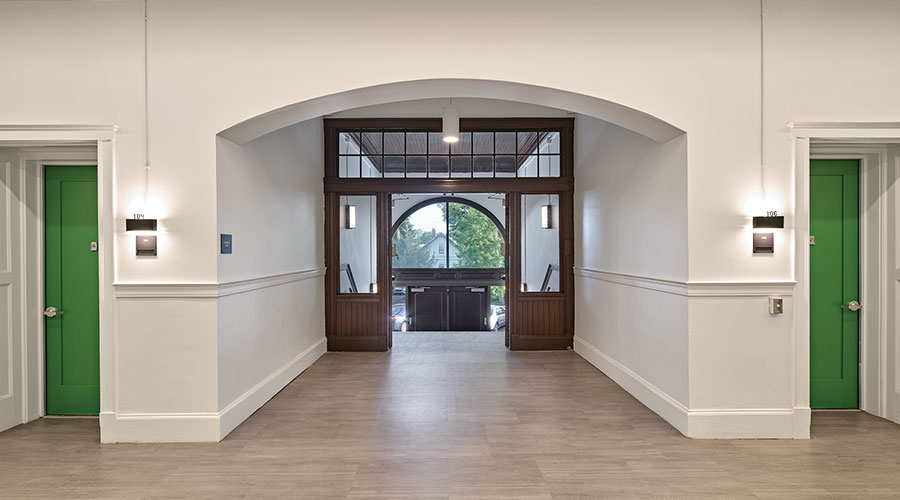Managing Input During Renovation Project Planning
Having worked on a campus library renovation project one floor at a time for almost two years, Richard Dernowski nicely captures the challenge associated with such projects on college campuses: "There are lots of acrobatics involved with logistics," he says. Complicated scheduling, short timelines and a lot of cooks in the kitchen — these are the three main factors that add up to these logistical challenges. What's more, these three logistical challenges are fundamentally at odds with each other when a facility manager is trying to get through a project on time and on budget.
The project Dernowski, director of capital projects at the University of Toronto, is working on is a $24 million renovation to the campus' main 1 million-square-foot, 14-floor library — the Robarts Library. Because the building is still open 24/7, "it's really critical how we schedule areas of work so that we don't severely impact students and academics. It requires some juggling of logistics and priorities," he says.
Campus renovation projects also are often done during the summer, so as to ensure that the careful balance of academic life isn't upset. This strategy has its own logistical issues to ensure that a project can be completed in the short 75-or-so-day timeline.
Finally, campus renovation projects always require input from and the approval of a wide array of people — from academics to student government to the state legislature, in some cases — and the ante is upped on the logistical difficulty factor.
Of course, none of these present an insurmountable challenge, and the lessons learned by facility managers who have done successful campus renovation projects are a good starting point for success on other projects.
Filtering the Input
Colleges and universities are, by definition, collegial environments. So when facility managers set out on renovation projects, they often find they get more input than they can use. "There's much more consultation on these projects," says Dernowski, comparing campus projects to commercial. "Because academics have earned their bragging rights in their fields, they often assume they're experts in design and construction, too."
From a scope and programming point of view, the input of the faculty and students who will be using the space is critical. But it's important to winnow that input down to what's doable with the budget and timeframe. "Their dreams are big," says Dernowski. "But they need to be managed to realistic expectations and funding available. They know their needs, but they may not be proficient in defining those needs."
At Butler University, senior project manager Craig Hardee recently worked on a project to renovate an old science building to make it the new home for the College of Business. The faculty wanted the building to have more of a corporate headquarters feel, instead of the sterile, scientific feel of the building as it was. So Hardee worked carefully to give the building a warm and inviting aesthetic, filtering suggestions as he went. "Our advantage is that one person — me — does most of the design work and construction management," he says. "We work through the floor plans with the faculty, but there comes a time when two or three decision-makers say ‘this is what we're going to do.'" So, the key is to recognize when that time has come — that is, when the time for talking is over and the time for doing begins.
"With renovations, there is always a large number of stakeholders," says Greg Justice, construction and project manager at Indiana University — Purdue University Fort Wayne (IPFW). "We have a core group that does a lot of the hard design work, but the expanded group of stakeholders, often 25 to 30 people, includes academics, the board of trustees, students, etc." In fact, says Justice, if a renovation project hits a certain ever-shifting dollar amount, the school — because it is public — must even get approval from the Indiana state legislature.
So facility managers need to polish their arbitration skills and realize that their role on these projects may end up being one-third project planner, one-third referee and one-third public relations professional. Especially as the project unfolds, be sure to make communication a high priority, say these experts. "Much of the success here is determined by the skill of relationship management," says Dernowski. He says on his library project, he's had the same project manager for each floor, which has been beneficial in terms of establishing and maintaining a good working relationship with the librarians and other stakeholders. "Our senior project manager knows the important people and the decision makers," he says. "And she also knows who might be the trouble-makers."
Another tip is to hold weekly meetings to keep everyone apprised of progress. It's easy for such update meetings to slide down the priority list once a project really picks up momentum, says Hardee. But making them a priority will pay dividends in that problems will surface before they turn into huge arguments or worse.
Dernowski echoes that sentiment: "Communication of progress is critical because academics are curious by nature."
Hardee also recommends the step of getting emergency contact information for the important decision makers before construction begins. That way, if a decision is required in a matter of hours — not uncommon on these fast-paced projects — the stakeholders can all be contacted to work out a solution.
Related Topics:












